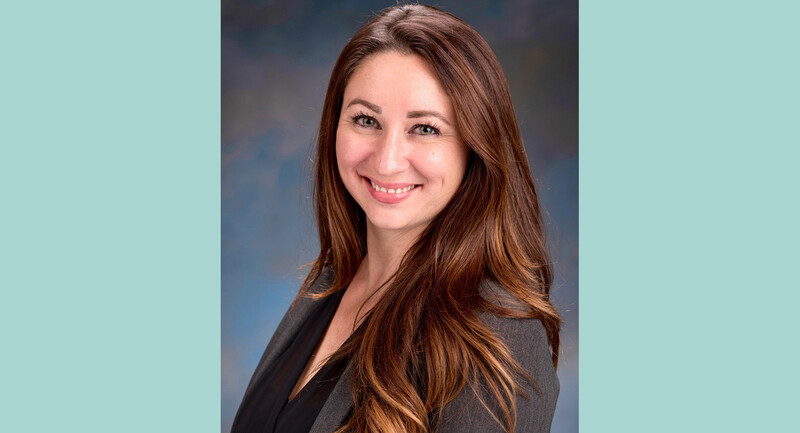Bill Sanderson, a principal in the San Francisco Unified School District and one of the authors of this article, walked into a college-readiness task force meeting in the fall of 2008 with one of his students on his mind. He had just learned through some talk in the lunchroom that a junior at his high school, Andrea, was going to fail her Spanish class. At the task force meeting, the district's then-superintendent, Carlos Garcia, charged the group with designing the new college-ready graduation policy to align with course requirements for university admissions. By ensuring that all students participate in required courses for college entrance, this graduation policy would aim to remove a major barrier to college access.
The goals of the new policy were understandable. San Francisco's board of education recognized many students did not have access to the college-preparatory high school coursework because their schools did not offer it or have enough staff to teach it, so these students were excluded from taking advantage of certain career and college options after high school. For example, in 2010, only 29 percent of district Latino and 16 percent of Black graduates completed college-preparatory courses with a C or better, compared to 51 percent of all high school graduates in the district. This made them ineligible for the University of California/California State University admission requirements.
But Sanderson immediately had concerns about how the new policy would work in practice. He knew that Andrea, for example, was struggling to pass year one of Spanish and had a personality conflict with the only Spanish teacher at the school. How in the world would he and his school staff help her pass not just one, but two Spanish classes under this new college-readiness policy? How would the staff be able to monitor and support students like Andrea so that they could meet these new requirements? The district's systems of tracking course-taking and student support were relatively decentralized. It would be easy for a student like Andrea to miss one requirement for graduation, let alone all the other steps to transition to postsecondary schooling.
This kind of challenge is not unusual for principals. Many school leaders struggle to keep their students on track for graduation and postsecondary success. High schools in San Francisco, and many schools across the nation, have historically not been successful in graduating high rates of Black, Latino, Pacific Islander, English learner, and low-income students, let alone getting them to enroll and persist in postsecondary schools.
To attempt to close these gaps in recent years, several large urban school districts in California have increased their high school graduation requirements to align with University of California/California State University A–G college admission requirements, mainly to systematically remove barriers to college and career readiness (Betts et al., 2013). A–G signifies a set of course requirements needed to gain admission to the UC/CSU higher education system. Following suit, after multiple discussions with various stakeholders and analysis of the proposed college-ready policy, San Francisco's school board voted in 2009 to add a third year of mathematics and a second year of world language to the high school graduation requirements.
This is a story of persistence and growth for a district that wants to ensure the best opportunities for all its students.
As researchers and leaders in implementing San Francisco's A–G policy, we played various roles to shift the culture, create structures, and establish regular monitoring to improve graduation outcomes—and prevent students like Andrea from falling through the cracks. Over the more than 10 years our policy has been in place, the district has seen gains in high school graduation rates and has been able to offer students access to dual enrollment and priority enrollment at a local community college. Yet gaps still remain. A closer look at the district's successes and challenges offers lessons for other districts in implementing these kinds of policies. It tells a story of persistence and continuous growth for a district that wants to ensure the best opportunities for all its students, especially struggling ones like Andrea.
Challenges of Implementation
Sanderson knew it was one thing for his district to adopt a college-ready policy and another thing to implement it successfully. Prior to the adoption of the policy, Sanderson participated in an A–G study team to assess the potential impact and implications of the college-ready graduation policy. The team named specific changes the district needed to make to implement the policy: Additional teachers and professional development, increased awareness of higher graduation requirements across preK–12 levels, the development of key K–12 indicators and benchmark skills to identify students who need interventions, strong safety nets for struggling students, and continuous monitoring (Jimenez, 2009).
The superintendent promoted Sanderson to Executive Director of College and Career Readiness to lead systemic changes to create the culture and conditions needed to improve graduation and on-track rates and support struggling students under the new policy. Key changes Sanderson oversaw included:
The development of administrative regulations and a centralized A–G course submission process. Sanderson, with other central and school site leaders, developed a cross-departmental effort that established administrative regulations to standardized graduation practices across school sites. Previously, school sites determined their own promotion, graduation, attendance, and discipline policies, which proved problematic in implementing a districtwide graduation policy (Jimenez, 2009). After the adoption of the A–G policy, district departments created regulations that delineated graduation course requirements and waiver processes, approved alternative means to meet graduation requirements (such as credit recovery, non-district coursework, independent study, or middle school language immersion courses), and course exemptions.
Central office leaders also centralized the A–G course submission process that brought more consistent A–G course offerings to all high schools. Regardless of the high school students enroll in, courses now have common course titles and credits related to graduation. Grade 9 mathematics at one high school has the same meaning as Grade 9 mathematics at another.
Capacity-building of school counselors and improved data system. School counselors were trained on the policy so that they could support off-track students toward graduation, through regular check-ins and referrals to credit recovery options. In addition, the San Francisco district, in partnership with Stanford University's Leadership for Equity & Accountability in Districts and Schools, developed categories of graduation status based on credit accumulation to identify whether a student was on the path to graduate high school under the new requirements. District leaders, including Julie Yu, a coauthor of this article, coordinated a biannual intervention process, where school administrators and counselors monitored students' graduation status with "on-track reports" and provided off-track students timely counseling support. They could also register students in credit recovery opportunities.
Safety net programs and supports. The district, through the leadership of Sanderson and later Jennifer Fong, another coauthor of this article, coordinated programs that offered credit recovery courses to students who needed to make up an F grade or retake the course to improve a D grade for college eligibility. It distributed funds for site-based credit recovery and intervention programs to meet school-specific needs and targeted populations. Since 2013, San Francisco's voter-approved education-enrichment funding initiative has provided additional support for these credit recovery programs. By the 2015–2016 school year, about a quarter of San Francisco Unified high school students had made up credits in A–G courses through these programs.
A "Grad"ual Improvement
After 11 years of the policy, Yu, the district's data and policy manager, conducted a research review that showed that the implementation of the new college-readiness policy had helped more students from historically underserved groups to graduate and reduced the racial opportunity gaps. She found that four-year graduation rates had improved for the district and across racial groups during the implementation period, narrowing equity gaps between Black and Latino students and their white and Asian peers (Yu, 2021). District graduation rates increased about four percentage points, from 85 percent in 2013, the year before the policy, to 89 percent in 2016, and Black and Latino students experienced even greater gains (7 and 9 percentage points respectively).
Despite these gains, however, there was no significant improvement in college enrollment and completion rates districtwide. While the opportunity gaps in college enrollment for Black and Latino students did narrow, these students still did not have the same opportunities to enroll in or complete college as their peers. For example, according to the National Student Clearinghouse, about 15 percent of Black and 28 percent of Latino San Francisco high school graduates in 2014 completed a degree in six years, compared with 69 percent of Asian and 56 percent of white students from the district (2020).
Quality and Coherence Matter
Even with notable gains in high school outcomes and postsecondary success, the minimal improvement and persisting equity gaps in college outcomes suggest that the college-readiness policy was too limited in scope to prepare students to succeed through college. As a result, we are continuously working to improve the district's policies and procedures to increase college access, persistence, and completion for all students. Here are some strategies we are working on to better support students:
Support students in danger of not meeting university course requirements and enhance student learning through consistent grading practices. Because San Francisco's graduation policy accepts D as a passing grade, the policy does not guarantee that our graduates will meet the minimum C grade for state university course admission requirements. In addition, the district needs to establish fair and consistent grading policies across all schools.
Adopt an internal K–12 indicator system with student supports. Our district's on-track/off-track data system has been proven effective in improving graduation rates, but the district lacks a comprehensive K–12 indicator system that links early warning indicators at the K–8th grade levels to the high school on-track/off-track data. Research has shown that middle school attendance is linked to high school graduation rates and college enrollment. In one study, middle school students with chronic absences reduced their probability of high school graduation by 7 percent and college enrollment by 8 percent (Liu, Lee, & Gershenson, 2019). There were similar findings in a Chicago study, in which middle school attendance and grades were predictive of high school outcomes (Allensworth et al., 2014).
With an integrated K–12 data system, our schools can use timely data to monitor students' progress and attendance in earlier grades and intervene when they show early signs of falling behind. Central office leaders can use this information to establish systems of support at strategic points where students struggle.
Strengthen external partnerships with higher education systems. The San Francisco district has made considerable progress in expanding access to college-ready courses so students are eligible to apply to college, but there has not been a similar effort in helping students persist and earn a college degree. Local efforts like the Bridge to Success Initiative, a partnership between the district and City College of San Francisco started in 2010, included several policy changes to streamline the college's matriculation process, while state legislation and funds expanded dual enrollment opportunities for San Francisco students.
Middle school attendance is linked to high school graduation rates and college enrollment.
We've been further strengthening these partnerships by establishing formal data-sharing agreements, where shared data can inform potential points of interventions and foster goal-setting and collaboration between agencies (Lee et al., 2013). For example, San Francisco's district shares information with the City College of San Francisco about incoming students' course completion to help with placing students in appropriate courses in their first year. In the past, college leaders placed incoming San Francisco graduates in courses without knowing what courses students passed in high school.
Since the adoption of the college-ready graduation policy, the district has learned that increasing academic standards for all students, with the necessary structures and supports in place, can improve outcomes for students, especially for our most vulnerable populations. Though there is a lot of work to be done to actualize the hope that all students can access and be successful in a postsecondary path (if they choose to), students facing challenges similar to Andrea's are now in a school environment where counselors are more aware of their academic standing—and can connect them to the academic supports they need to graduate high school and pursue a career.









